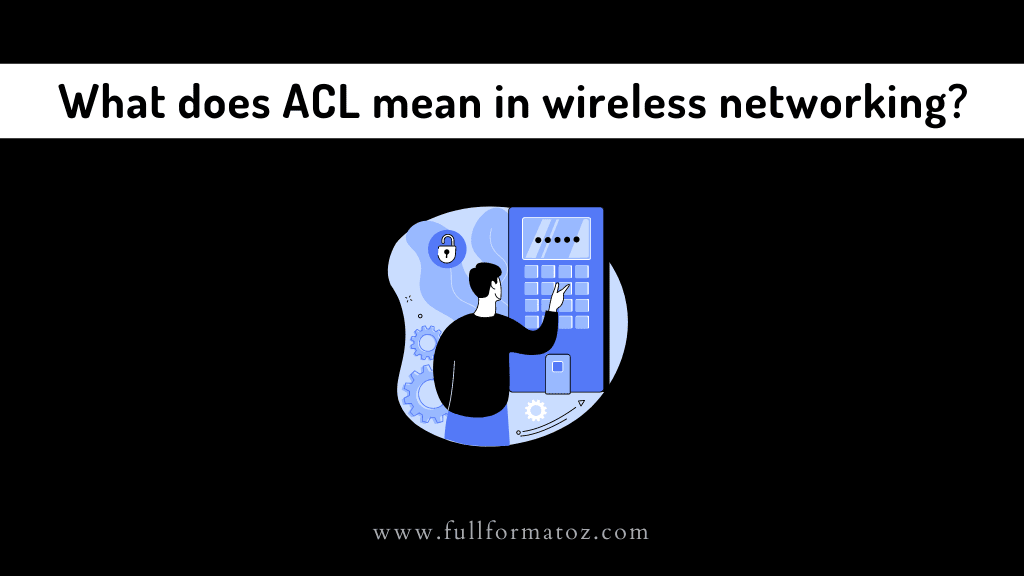What is the Full Form ACL in Networking?
 |
Full form of ACL in wireless networking - Full Form, Meaning, and Definition
The full form of ACL in wireless networking is: ACCESS CONTROL LIST
What does ACL mean in wireless networking?
The main purpose of ACL is to provide basic protection to a network. Allowing traffic to enter and leave without any check makes the network susceptible to attacks, and ACL helps in controlling the inflow and outflow of traffic.
Access lists can be named by the network administrator using IP Named Access Control Lists feature. Numbered Access Lists are another way of identifying Access Lists specified by number.
What are the Benefits of Access Lists?
The following are the benefits of Access Lists:
- Helps in improving network performance
- Helps in blocking unwanted traffic or users
- Helps in controlling bandwidth used by monitoring the excessive traffic
- Reducing Dos(Denial of Service) attacks and spoofing
- Helps in controlling routing updates which are communicated in the network
- Controls the addresses translated by Networks Address Translation
- Identification of local users, remote users, and remote hosts becomes easy
Also Read: Full Form of API in Computer
What are the types of ACL in wireless networking?
- Standard ACL: It protects the network by only using the source address.
- Extended ACL: Through extended ACL you can block a single host destination as well as the entire network.
- Dynamic ACL: This kind of ACL is dependent on extended ACL and other authentication and is used in specific times.
- Reflexive ACL: It is referred as an IP session and it filters traffic which bases on the upper layer session.
Why use an ACL?
The main motif of using an ACL is to give security to your network. If there is no ACL the traffic is likewise allowed to enter and exit, thus making it more weak to non-required and harmful traffics. Through ACL you can control your traffic flow.
What are the components of ACL?
- Sequence number: Using a number to identify an ACL.
- ACL name: Some routers use a name to identify an ACL entry.
- Remark: Few ACLs allow you to comment to help you add detailed information.
- Statement: Allows or denies particular sources based on address.
- Network protocol: Marks whether deny or allow IPX, ICMP, TCP, IP, NetBIOS, etc.
Where is ACL placed?
- Extended ACL: In a router, the extended ACL is placed closer to the source that is filtered. If it is placed distant from the source there will be inefficient usage of network resources. The reason for this is the packets can be sent far away only to be denied.
- Standard ACL: The place of a standard ACL should be as closer to the destination as possible. Standard ACL filter packets are only based on the source address. Hence by placing the ACL so close to the source enables it to act on adversely through denying the traffics.
How does ACL help in protecting the network?
- Restricting users or device access to the network
- Limiting traffic into a network
- Checking that traffic doesn’t leave the network
- Users are allowed access (temporary) dynamically through a firewall
- The administrator can deny unwanted packets from entering the network with the help of ACL




Join the conversation